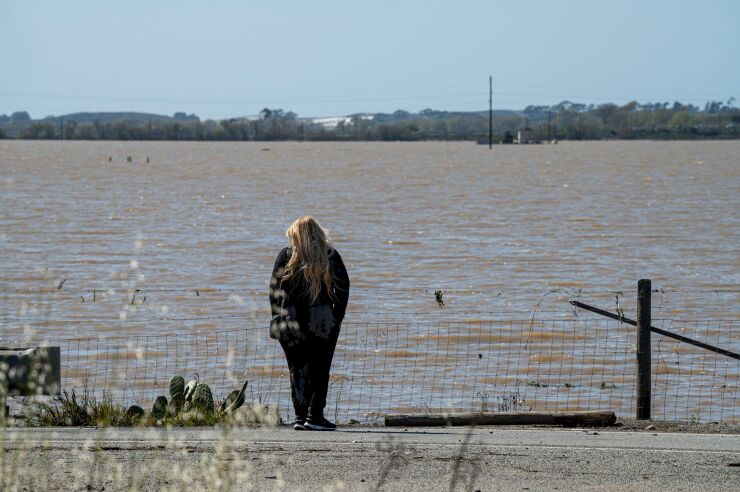Western states receive $585 million for water systems from infrastructure bills

The Biden administration has announced it planned to spend $585 million to fix aging water systems in the West, more than half going to California.
The funding announced Wednesday during an event at the Imperial Dam on the Colorado River in Yuma, Arizona, will go to 83 projects across 11 states.
California will receive $308 million from the Infrastructure Investment and Jobs Act of 2021 and the Inflation Reduction Act of 2022.
Other states receiving funding are Arizona, Colorado, Idaho, Montana, New Mexico, Nevada, Oregon, South Dakota, North Dakota and Washington.
The IIJA provided $8.3 billion for water infrastructure projects over five years, of which $240 million was allocated in fiscal 2022, according to the Department of the Interior.
“As we work to address record drought and changing climate conditions throughout the West, these investments in our aging water infrastructure will conserve community water supplies and revitalize water delivery systems,” Deputy Interior Secretary Tommy Beaudreau said in a statement.
The Biden administration also allocated $4 billion to alleviate drought as part of the Inflation Reduction Act.
That funding will pay farmers to temporarily avoid planting crops to conserve water as well as funding more efficient irrigation systems and improvements to canals to reduce water loss.
“We are excited about the funding the federal government has approved through IIJA,” Lauren Sanchez, California Gov. Gavin Newsom’s senior climate advisor, said during an online presentation in which the state reviewed its climate adaptation strategy. “We have been working hard to make sure we are eligible for any federal funding that is available.”
California received $144.45 million alone for eight projects in the Central Valley, the state’s agricultural heartland, which was decimated for three years by drought and then hammered by a series of storms since January that have caused devastating flooding.
The region has received so much rain that a historic lake in Tulare has reappeared washing out a road and farmers’ fields.
The projects include $42.5 million to replace a pump, turbine and valve at the Central Valley Project, a 400-mile network of dams, reservoirs, canals, and hydroelectric power plants.
Another $69.5 million will go to upgrade the Trinity River Fish Hatchery by replacing corroded and leaking pipes, installing new filtration system and replacing 150 iron supports in shallow troughs.
Other major outlays include $56 million to construct a treatment plant in Leadville, Colorado, and $20.1 million to replace the Mandaree Water Treatment Plant in Missouri. North Dakota received more than $40 million for 27 separate Pick-Sloan Missouri Basin projects.
“These projects have been identified through a rigorous process,” Bureau of Reclamation Commissioner Camille Calimlim Touton said.
Calling California’s climate adaptation strategy the state’s roadmap to resilience, state Secretary for Natural Resources Wade Crowfoot began by describing the series of climate crises the state has experienced for the past several years.
“We had another year of climate extremes in 2022,” Crowfoot said. He pointed to the historic heat wave in September that nearly interrupted the energy grid, the three-year drought representing the state’s driest period, followed by a January that brought the wettest three weeks in history, and an incredible series of storms and record-breaking snowpack.
The strategy connects climate work across agencies and sectors to answer the fast-moving threats the state is experiencing now, while preparing for the future, state officials said. It targets threats from wildfires, droughts, flooding, extreme heat and sea-level rise.
“Until recently, these efforts were siloed by sector. Now they are coordinated and guided by overarching, holistic priorities,” said Samuel Assefa, director of the Office of Planning and Research.
California is required by statute to issue a statewide climate adaptation strategy every three years and to provide updates on implementation. The updated strategy includes metrics on the website tracking the state’s progress.
